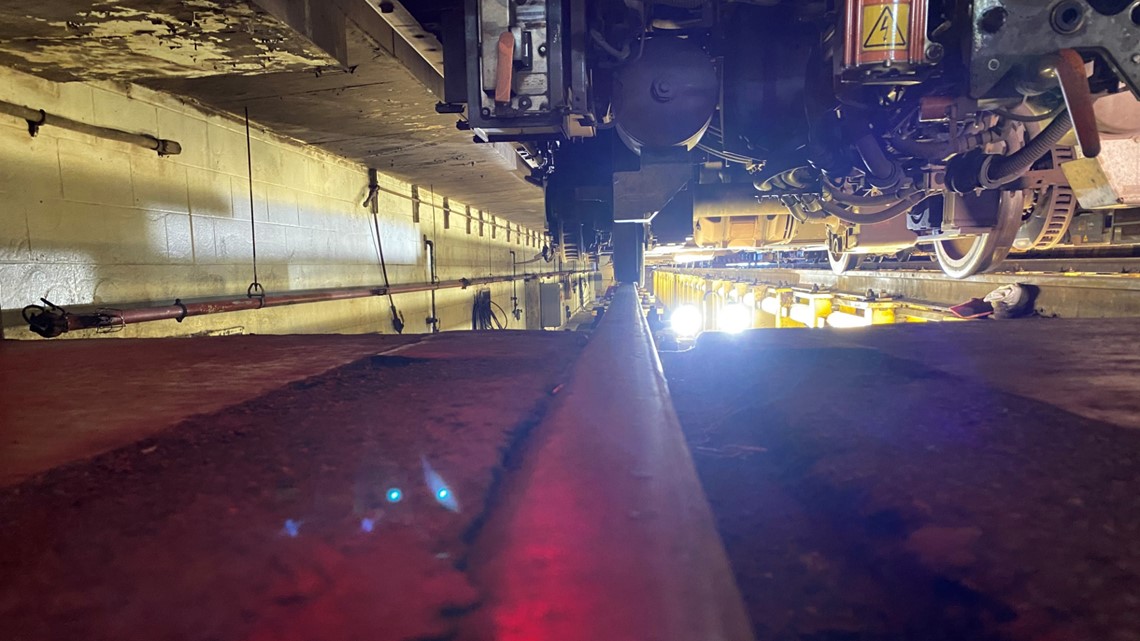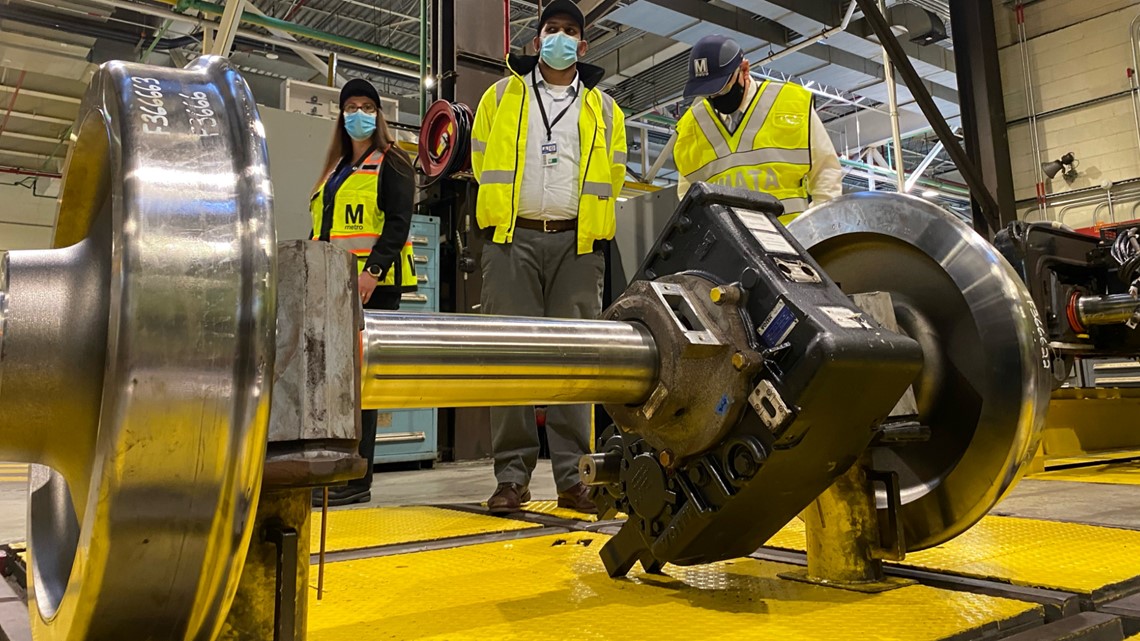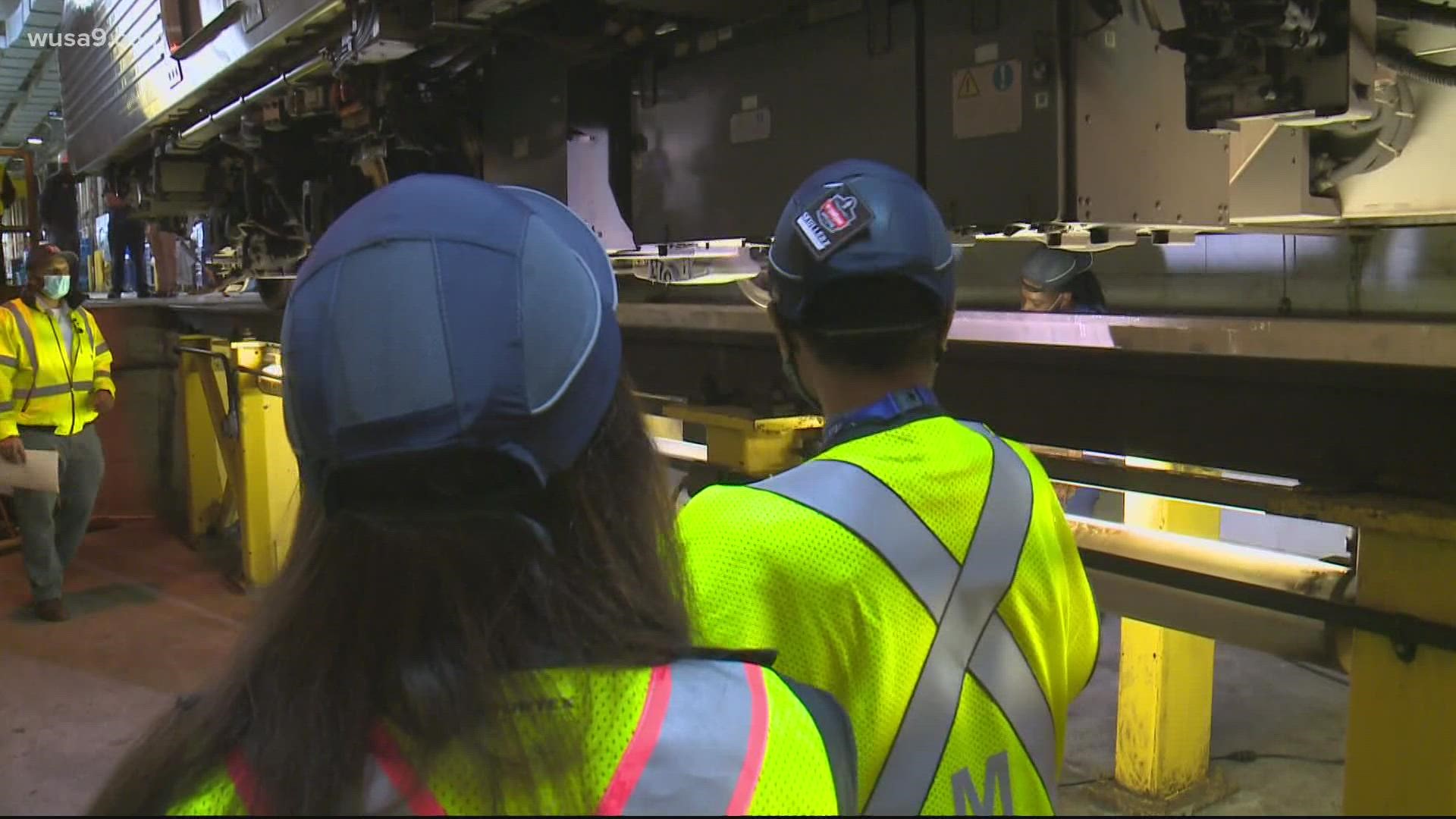GREENBELT, Md. — Metro is struggling to regain public confidence after one of its newest rail cars slipped off the tracks last month, forcing almost 200 people to evacuate, and leading the safety commission to take all the 7000-series cars out of service.
As part of its campaign to regain trust, the rail system gave reporters an unusual behind the scenes look at what it's doing to make sure a derailment doesn't happen again.
Metro's Greenbelt Rail Yard is one of eight stations where the transit agency is carefully measuring the distance between wheels on its 748 rail cars in the newest 7000 series. The distance between the back face of one wheel and the back face of the one on the opposite side of the axle is supposed to be 53 5/16s of an inch, plus or minus one-sixteenth of an inch.
"We want to make sure people understand we're doing everything in our power to make sure the system is safe before we start running these trains again," Metro General Manager Paul Wiedefeld said.
But the National Transportation Safety Board (NTSB) said the wheelsets have spread beyond that range more than 50 times over the last four years. The safety commission also said that Metro knew about the issue, and failed to get ahead of the situation, contributing to the Oct. 12 derailment incident near the Arlington Cemetery station, which NTSB called potentially catastrophic.
"We are fortunate that no fatalities or serious injuries occurred as a result of any of these derailments, but the potential for fatalities and serious injuries, was significant," NTSB Board Chairman Jennifer Homendy said at a news conference following the derailment.


Currently Metro is running two of its 7000-series cars out on the rails during the day without any passengers on board. Then they are bringing them back to the yard at night and very carefully measuring the wheels and the axles to see if they're getting that same kind of separation that likely caused the derailment.
"So far, no anomalies," Wiedefeld said. "So we'll let the data speak for itself."


Metro is hoping to develop an inspection regime -- maybe as often as once every eight days -- to ensure it catches any issues early. But Wiedefeld declined to specify a target date for returning more than half its fleet to service.
"Once we feel it's safe, that will drive the date," he said.
Service will be slower at least through the end of the month. Train times continue to be every 15 minutes for the Red Line, every 20 minutes for the Green Line and every 30 minutes for Orange, Blue, Yellow and Silver Lines.

